eISSN: 2378-315X


Review Article Volume 13 Issue 2
1 Samarkand State Medical University, Samarkand, Uzbekistan
2National Anti-Doping Agency, Tashkent, Uzbekistan
Correspondence: Dilfuza A Alieva, Samarkand State Medical University, Samarkand, Uzbekistan
Received: May 29, 2024 | Published: June 27, 2024
Citation: Alieva DA, Rizaev JA, Sadikov AA. The Covid-19 pandemic and the analysis of the current epidemiological situation in Uzbekistan and the neighboring countries of Central Asia, as well as the world (analytical review). Biom Biostat Int J. 2024;13(2):65-70. DOI: 10.15406/bbij.2024.13.00416
This article analyzes global statistics on infections in various countries and regions of the world since the announcement of the COVID-19 pandemic, based on data from various sources such as Johns Hopkins University and Worldometer. It describes the main peaks of morbidity and mortality from coronavirus infections according to trends around the world. Special attention is paid to Uzbekistan and neighboring Central Asian countries, which have common borders, as well as to epidemiological data on sports personnel's prevalence and mortality.
Keywords: epidemiology, prevalence, morbidity, mortality, SARS-CoV-2, Uzbekistan, Tajikistan, Kazakhstan, Kyrgyzstan
March 11, 2020 was the day when the World Health Organization (WHO) announced a pandemic worldwide. On March 13, it became known that Europe had become the center of coronavirus infection. After that, the virus was officially named SARS-CoV-2, COVID-19 or 2019-nov. This period became one of the most difficult tests for the whole world. Its origin was considered to be the city of Wuhan (China, Hubei Province), where the manifestation and registration started in December 2019. By February 20, 21 China announced the overcoming of the viral epidemic. At that time, the number of patients was 37,162 people. During this period, more than 80,000 tests were conducted. The Covid-19 pandemic is part of the global coronavirus disease 2019 caused by coronavirus 2 with the development of severe acute respiratory syndrome.1– 3
The spread of the virus in Uzbekistan started on March 15th, 2020 when the first case of COVID-19 was confirmed in a citizen of Uzbekistan who had returned from France. The Ministry of Health in the Republic of Uzbekistan published a list of people in direct contact with that individual and placed them under quarantine. This led to the declaration of a state of emergency in Kazakhstan, which closed its border with Uzbekistan and stopped flights to France, Spain, and the UK. On March 20th, the government announced the closure of entertainment venues and public catering facilities as well as a ban on large weddings and family gatherings. Starting on March 22nd, Uzbekistan switched to remote work and mandatory use of personal protective equipment such as masks and respirators. In order to contain the spread of the virus, it was decided on March 23rd, 2020 to declare quarantine. On March 27, 2020, the first case of death due to this disease was reported in Uzbekistan. The patient was a 72-year-old woman with underlying conditions, and her infection was traced back to her daughter, who had recently returned from a trip to Turkey. By April 1, 2020, there were 173 confirmed cases. In response, a self-isolation measure was imposed and freight traffic was restricted on April 2. Additional cases were confirmed on April 3. Quarantine restrictions were extended until June 15, and sports events were banned until July 1, due to further increases in cases. However, by the end of June, the number of cases had reached approximately 3-5%. By July 24, 2019, more than 100 cases had been reported. The peak in cases occurred in July, with a daily increase of over 2%, and quarantine measures were extended until August 20.4–6
Based on the current situation, quarantine measures were slightly relaxed on August 15th, allowing for family celebrations with a maximum of 30 attendees. These measures were extended in September 2020 until January 1st, 2021 according to data from the beginning of September. The number of coronavirus cases had increased to 43,663 by September 5th with more than 41,000 recoveries and 348 deaths. Mass events were also extended until September 30th due to the continued risk of infection despite these measures. The regions were divided into three zones based on the level of epidemiological risk and potential for infection: green (low risk), yellow (moderate risk) and red (high risk). Green zones included Navoi, Jizzakh and Kashkadarya; yellow zones included Khorezm, Surkhandarya and Tashkent; and red zones included the Republic of Karakalpakstan, Samarkand, Bukhara, Syrdarya, Namangan and Andijan (Figure 1). Schools have been open in green areas since September 7, and have been operating in all regions since 14 September, with a ban on mass events until 1 January 2021.7– 9
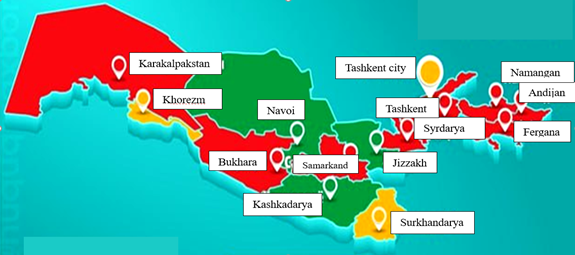
Figure 1 Territorial division of the Republic of Uzbekistan by color zones depending on the epidemiological situation.
As of February 18, 2024, there were 238,818 recorded cases of coronavirus infection in Uzbekistan. The number of infections per day increased by 16, and the number of deaths was 1,637. In the active phase of the disease, there are 182 people, and in critical condition, there are only 23. The overall mortality rate is 0.69%, and the confirmation of cases of complete recovery for February 2024 was 236,999. Currently, the situation with COVID-19 in Uzbekistan remains stable.
The review of the epidemiological situation in Uzbekistan and around the world showed that it was not comfortable, requiring the adoption of urgent quarantine and preventive measures taken by the government. A separate question concerned the sports contingent. Considering the specifics and professional activity, athletes remain the most vulnerable to infection with various types of infections, which is due to the mass nature of sports participation in various competitions on an international and national level, and the numerous movements of teams across different regions of the world. In this regard, addressing the problems of preventing the spread of coronavirus infection among athletes requires the adoption of anti-epidemiological measures and implementation of immunoprophylactic measures. According to the Committee for Sanitary and Epidemiological Welfare and Public Health, patients with a mixed infection with coronavirus infection and acute respiratory disease (ARI), which is typical among citizens with chronic diseases, concomitant pathologies, and lack of vaccination, are registered. Given the high prevalence of this virus, the President of the Republic signed an order establishing a Special Republican Commission to develop a program of measures to prevent the import and spread of a new type of coronavirus in Uzbekistan. This order became the main official starting document. Based on the adopted order and developments of this commission, patients with severe forms of influenza and other respiratory diseases, based on clinical and epidemiological indications, and with suspected coronavirus infection must be tested for Covid-19.The main departments and the Ministry of Finance were instructed to allocate financial resources to equip sanitary quarantine points, particularly at places where state borders are crossed, with modern stationary and portable thermal imagers, as well as other diagnostic tools.1,3
The Ministry of Health was tasked with providing and creating a necessary reserve of diagnostic tools in regions and the capital, as well as equipping intensive care units with medicines, disinfectant solutions, equipment and personal protective equipment. As can be seen from available data, without taking appropriate organizational measures and necessary interaction between government agencies and healthcare systems of most countries, the health systems would become insurmountable, especially if international organizations were not involved. All healthcare systems have coordinated most research to find a common ground in addressing coronavirus infection problems, developing modern and effective prevention, diagnosis, and treatment methods. Only through joining forces can positive results be achieved in combating the pandemic. The state of the epidemiological situation in the Republic of Uzbekistan is presented in diagrams with monitoring until 2024. In Figure 2, we can see that the prevalence of coronavirus infection had a wave-like pattern and underwent both periods of increase and decrease.
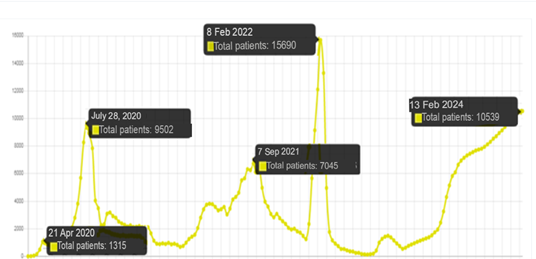
Figure 2 Dynamics of the number of Covid-19 cases in Uzbekistan over the period from the beginning of the pandemic announcement to 2024y. [https://horosho-tam.ru/uzbekistan/coronavirus]
Since the beginning of 2020, starting in April, the first peak of the disease was noted on April 21st, 2020 when the number of cases was 1,315. Then, by mid-May, there was a slight decrease in the number of cases to 499. In the summer, there was another significant jump, with the number of patients reaching 9,502 by July 28th. The decline in this wave occurred in early September, on September 8th, 2020 with 2,329 cases, followed by a decrease to 686 on March 9th, 2021. These changes can be attributed to the massive quarantine measures taken by the government and relevant health organizations, as well as the preventive measures introduced with vaccine prophylaxis. The next wave of increases in cases was observed on September 14, 2021-6,498 cases, followed by a decrease to 1,247 cases on January 4, 2022. Then, in dynamics, the highest number of cases occurred on February 8, 2023 - 15,690 cases, which apparently was related to some relaxation of quarantine measures and negative attitudes towards vaccination. By June 14th, 2,022 there was a decrease in the number of cases to - 194, and since then there were no significant increases, only a slight increase by mid-June to - 1.485. To date (as of February 13th, 5th), according to open sources, the number of patients has reached 10.539. This situation could be related to modifications of the virus and its activation in previously unknown forms (e.g., «alpha», «beta», «delta»). One of the latest strains of «Pirol», which is the most contagious, has been spreading rapidly. The first reports of it were in July 2023. This strain differs from other coronavirus variants in the large number of mutations that have occurred in its protein spike in a short period. This increase in mutations increases its contagion, as well as its ability to bypass immunity after vaccination or previous infection. People with immune deficiency and chronic diseases such as diabetes, cardiovascular disease, and cancer, are at high risk, and the clinical picture in these cases can be severe. Despite this, vaccination is one of the most effective ways to prevent coronavirus infection, especially in people with severe course and potential complications. Vaccination against COVID-19 is currently included in the National Calendar of Preventive Vaccinations of the Republic of Uzbekistan.10–12
The analysis of the dynamics of death from coronavirus over the entire period of the pandemic, according to official data, had a wave-like course as well. From January 28th, 2020, there were isolated initial deaths and they gradually increased throughout the year, reaching their first peak on September 15th, 2020 when the number was 44 deaths per day. Then, a slight decrease began which lasted until May 25th, when the daily number of deaths decreased to 10. This decrease continued until August 3rd, when it reached a peak again of 48 deaths. After that, the number remained high but the decrease was insignificant and the second peak occurred on November 9th at 16 deaths per day and the third peak was on December 21st at 23 deaths. The last patient to die from coronavirus was registered on March 8, 2022. To date, no more coronavirus-related deaths have been recorded (Figure 3).

Figure 3 Dynamics of the number of deaths from Covid-19 in Uzbekistan for the period from the beginning of the pandemic announcement to 2024.
An overview of the epidemiological situation regarding the prevalence of coronavirus infection and its analysis were conducted based on statistical data from the border countries in the Central Asian region, including Kazakhstan, Kyrgyzstan, and Tajikistan as well as from Russia, and global trends were analyzed.
The dynamics of statistical data regarding the number of Covid-19 infections in Kazakhstan according to official statistics from https://horosho-tam.ru/kazahstan/coronavirus shows that there were 33 cases recorded from March 17th, 2020 until the end of July. After this, the number increased to a first peak at the end of June, with 29,451 cases on July 28th. This indicates that the prevalence of the disease is quite high in the region, but it decreased significantly by October 27th to 3,930 cases. The second peak occurred on December 8th with 14,218 cases, which was two times less than the previous increase (Figure 4).
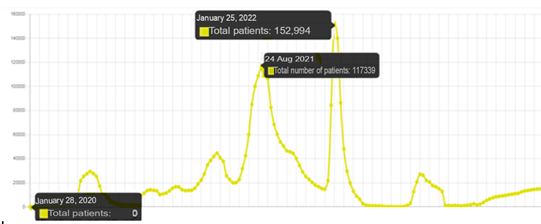
Figure 4 Dynamics of the number of Covid-19 cases in Kazakhstan over the period from the beginning of the pandemic announcement to 2024. (https://horosho-tam.ru/kazahstan/coronavirus)
In the future, the prevalence of the disease is expected to increase, with a peak on May 4th, 2021. The number of patients will sharply increase to 44,601 on that date, and then decrease by half by June 15th, 2021 to 20,109. After that, there will be a jump to 117,339 on August 24th. There will then be a sharp decrease that continues until January 4th of the following year. The next significant increase was recorded on January 25th of that year, when the number reached 152,994. From February to June, there was a decrease in sick people until 133. By the end of August, another increase occurred, taking the number of cases to 27,126. This was followed by a decrease until October 11th, when there were only 894 cases remaining. On November 29th, the number jumped again to 2,562. According to data from February 13th, there are currently 14,963 sick people. The dynamic pattern of deaths during this period in Kazakhstan had a wave-like character. Registration started on April 7, 2020 and on that day 4 patients died. The first peak was on August 4, 2020 with 265 deaths, followed by a decrease until October 13, 2020 when there were only 22 deaths. A second peak occurred on March 9, 2021 with 279 deaths, after which there was a gradual decrease until May 11, 2021 when the number of deaths increased to 186 (Figure 5).
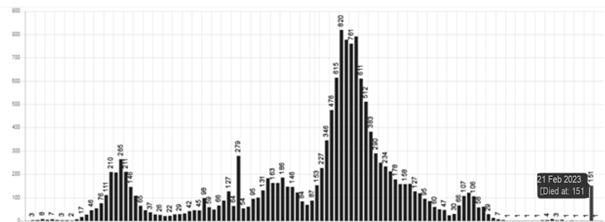
Figure 5 Dynamics of the number of deaths from Covid-19 in Kazakhstan for the period from the beginning of the pandemic announcement to 2024.
The largest jump in deaths in Kazakhstan occurred on August 10th, 2021 with 820 deaths, after which the number decreased and reached 121 by February 8th, 2022. On February 21st, 2023 according to registration data there were 151 deaths. During the reporting period the total number of deaths amounted to 13,848. There were 1,411,831 infected people and 1,383,020 recovered patients. According to this statistical overview, Kazakhstan accounts for 0.2% of all coronavirus tested and infected in the world. The mortality rate is 0.98%. This is slightly higher than the rate in the Republic of Uzbekistan, which is 0.65%. In Kyrgyzstan the number of cases worldwide is 0.03%. There are 206,897 cases of which 131 patients are serious, 2991 have died, and 196406 have recovered. The number of active cases according to latest information is 7500. Deaths per 1000 infected is 14As can be seen from Fig.6, the recording of the first cases of coronavirus was determined on March 24, 2020. The first peak and sharp increase occurred on July 21st, 2020 - 12,396 cases, then in the autumn, the number of cases decreased slightly, and by November 10th, 2020, it increased to 8,001 cases. After that, there was a slight decline in the winter and spring periods until the beginning of the summer, with an average number of no more than 4000 cases (Figure 6).
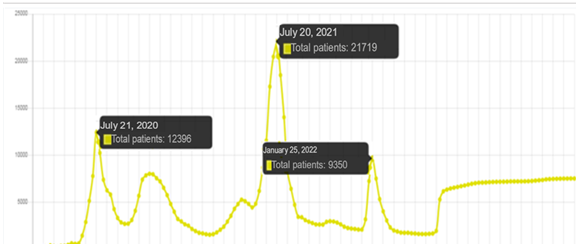
Figure 6 Dynamics of the number of Covid-19 cases in Kyrgyzstan over the period from the beginning of the pandemic announcement to 2024. https://horosho-tam.ru/kirgiziya/coronavirus
The highest peak for the entire pandemic was determined on July 20th, 2021. The number of patients reached 21,719 by the end of the summer, and a decline was observed until mid-September. This decline continued until the end of December, with no more than 2,000 cases remaining. However, by January 25th, another peak occurred with an increase of cases to 9,350. By August, the number had dropped to 6,140 and remained at that level on average. As of February, the number was 7,500, indicating a significant decrease in cases. Despite this, due to the presence of different virus strains, there may still be active forms of the disease. According to the number of deaths in Kyrgyzstan, there was an increase, which occurred by July 21, 2020 and amounted to 930 cases, with a subsequent downward trend and slight fluctuations until April 13, 2021 - 23 deaths. The number increased by August 3, 2021 to 79, and then decreased by April 5, 2022 to 5 deaths (Figure 7).

Figure 7 Dynamics of the number of deaths from Covid-19 in Kyrgyzstan over the period from the beginning of the pandemic announcement to 2024. https://horosho-tam.ru/kirgiziya/coronavirus
The mortality rate in Kyrgyzstan is 1.45%, which is higher than in Kazakhstan and Uzbekistan. In Tajikistan, during the entire duration of the coronavirus pandemic, there were 17,786 infected people, 125 deaths, and 17,264 recoveries. Based on available data from Tajikistan, mortality calculations were not performed, but a number of deaths per 1,000 infections was calculated. Conducting an analysis of the number of cases recorded since May 5, 2020 showed a peak on June 2, 2020 with 1,836 patients. On that day, the highest number of patients was recorded, followed by a downward trend that ended at 412 recorded cases on December 29, 2020.
In January 2021, the number of patients dropped sharply to 3 but began to rise again from June 22nd, reaching 397 by July 27th. During the year until September 21st, a decrease was noted, with no cases recorded until March 22rd, when the last recorded case was on February 13th of 204, at 396 patients (Figure 8).

Figure 8 Dynamics of the number of Covid-19 cases in Tajikistan for the period from the beginning of the pandemic announcement to 2024. (https://horosho-tam.ru/tadzhikistan/coronavirus)
Apparently, the statistical data obtained is unsatisfactory, as the complete absence of recording of patients with COVID-19 in 2021 and 22 is determined. The same trend is evident in the graph of mortality rates from coronavirus (Figure 9).
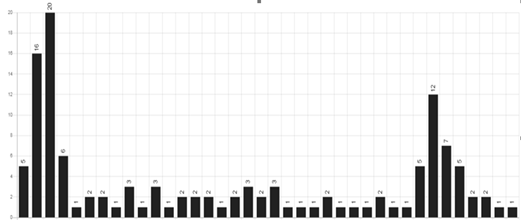
Figure 9 Dynamics of the number of deaths from Covid-19 in Tajikistan for the period from the beginning of the pandemic announcement to 2024. (https://horosho-tam.ru/tadzhikistan/coronavirus)
The situation in the Russian Federation regarding Covid-19 throughout the pandemic is characterized by the following data: there are 23,928,889 infected; 402,158 deaths; 23.343.310 recoveries; on average, 17 deaths per 1,000 infections in Russia, while Russia accounts for 3.4% of all tested and infected worldwide, according to the latest information. There are 183.421 patients. According to official statistics on coronavirus cases in Russia, registration of patients began on February 4, 2020-2 patients. Throughout the year, there has been a dynamic increase in cases, which, by January 19, 2021, amounted to 559.969, then in the winter-spring period, there was a slight decrease, but by November 23rd, 22 it increased to 1.044.562. With a slight decrease by January 2nd, 21 - 639.899. Then there was a sharp increase until February 1st, 5th, 2668.036, and then a subsequent decrease in number of patients until July 5, 19th, at 190.371 (Figure 10).
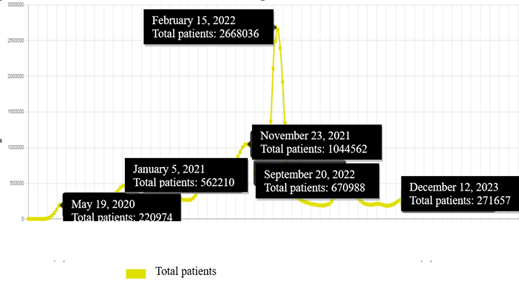
Figure 10 The dynamics of the number of Covid-19 cases in Russia for the period from the beginning of the pandemic announcement to 2024. https://horosho-tam.ru/rossiya/coronavirus
Another peak with an increase in cases was recorded on September 20, 2022, followed by a decrease, and the last increase occurred on December 12th, 2022, 203 - 271,657. Currently, on February 13th, the number is 183,421. The following graph (Figure 11d) shows the dynamics of coronavirus mortality in Russia. According to available data, the graph has a wavelike course with the highest point at 8,742 deaths on November 23rd, 21, followed by gradual decline, with the final peak on September 7th, when 909 people died. Subsequently, the death rate decreased, and on February 3, it was 1.06%.
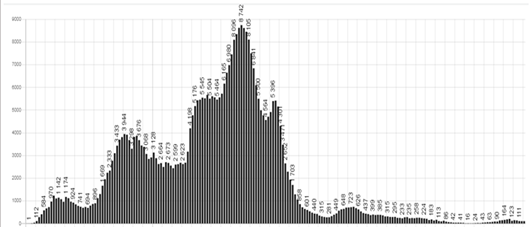
Figure 11 The dynamics of the number of deaths from Covid-19 in Russia for the period from the beginning of the pandemic announcement to 2024.
According to the official statistics website, the epidemiological situation regarding coronavirus infection in the world remains quite serious. The total number of cases throughout the pandemic has reached 703,483,785; deaths have been recorded at 6,984,631; recoveries at 674,255,606; and active cases remain at 22,243,548. Worldwide mortality stands at 0.99%. This is mainly due to elderly people and those with chronic illnesses who are at higher risk. If we look at the number of cases over this period (Figure 12), there were increases and decreases in infection rates. The world's statistics report began on January 28th, 2020 when there were 5,340 registered patients. Based on available data, from February 4th onwards there has been a significant increase in cases - 22.54% - indicating that the disease has become widespread and developed into a pandemic. The first peak of the disease occurred in early February 2021. The number of cases then reached 25,878,142. There was a sharp increase in cases, with a tendency for the number to continue increasing in large volumes. As a result of the introduction of quarantine measures and lockdowns, PPE (personal protective equipment), and complete restrictions on movement, the prevalence of the disease was slightly reduced until the end of the summer season. By June 29th, 2021, it had decreased to 11,435,898 cases. However, by September 7th, the number had increased again to 18,889,104. This was followed by a second peak in the world on February 8th, 2022 when it reached 74,480,095 cases. After this critical period with mass immunization, vaccination, and strict quarantine measures, there was a decrease in the number of new cases. By November 15th, this number had decreased further to 13,748,055. It continued to decrease until January 17th when it stood at 21,852,732 cases. The number remained relatively stable until February 2nd when there were 22,243,548 new cases reported.
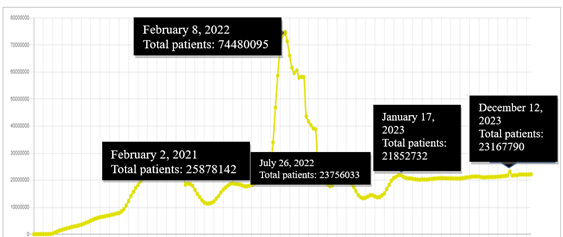
Figure 12 The dynamics of the number of Covid-19 cases worldwide since the beginning of the pandemic announcement until 2024. https://horosho-tam.ru/mir/coronavirus
An analytical review of the dynamics of coronavirus mortality in the world over the entire pandemic period shows the presence of more than 8 peaks in increase and a gradual decrease by February 2024 (Figure 13).
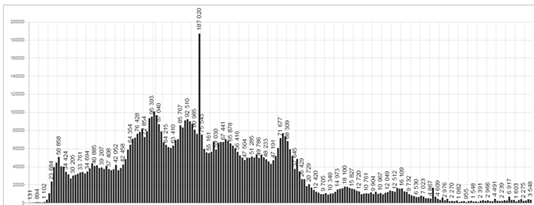
Figure 13 The dynamics of the number of deaths from Covid-19 worldwide for the period from the beginning of the pandemic announcement to 2024.
The first wave of a rise in the number of deaths worldwide was determined on April 21st, 2020 - 50,858; the next jump occurred on January 26th, 2021 - 101,129; the highest peak in the number of deceased patients occurred on June 8th, 2021- 187,020. After that, the number of deaths tended to decrease and increase gradually, and by February 15th, 2022 it reached 73,700. There were no significant increases in the number deaths in the subsequent period and the last peak occurred on April 25th, when 16811 died. By February 20th, 24 a significant regression had been achieved with the number of death cases at 1,830.
In terms of mortality the main contributors to the structure are: Yemen - 18.07% ; Western Sahara - 10% ; Sudan - 7.89% ; Syria - 5.48% ; Peru - 4.86% ; Mexico - 4,35%, and so on. This epidemiological review analyzes the current situation during the COVID-19 pandemic at both the global level and in individual countries, such as Uzbekistan, Kazakhstan, Kyrgyzstan, and Tajikistan. COVID-19 presents a challenge not only to health systems but also to economic and social development, affecting the health and well-being of many people.
The global pandemic brings significant challenges to states, showing that countries' preparedness for such large-scale events varies. Each country faces different challenges during the epidemic, including a shortage of medical professionals, insufficient medical supplies, and ineffective disease control measures. Social activity regarding compliance with precautionary measures also significantly impacts the epidemiological situation, as does the public's adherence to recommendations from medical authorities.
Uzbekistan, Kazakhstan, Kyrgyzstan, and Tajikistan found themselves in the focus of researchers and politicians because of their special geographical and historical ties to China, where the pandemic first started. It is important to note here that each of these countries have taken measures to combat the spread of the disease and introduced quarantine measures, but the results of these actions have varied. For example, Uzbekistan has been successful in managing this epidemic compared to other Central Asian countries, thanks to the introduction of restrictions on movement, mass testing, and active propaganda campaigns. Vaccination has also played a role in containing the spread of COVID-19 in Uzbekistan.
Kazakhstan and Kyrgyzstan have taken significant measures to fight the pandemic, although the lack of medical equipment and organizational problems have hindered their efforts. Tajikistan, on the other hand, has been hit hardest by the pandemic due to a lack of accurate data on morbidity and mortality, leading to a systemic crisis in its health system and other sectors. Despite some omissions, significant efforts have been made in all countries of the Central Asian region to minimize the negative effects of the pandemic and protect the population from the disease. Studying their experience could be a valuable source of information and insights for other countries facing similar challenges. However, given the dynamic situation, it is necessary and important for these countries to continue improving anti-epidemic measures and mechanisms to respond to new challenges in order to ensure the effectiveness of overcoming the pandemic and maintaining the health of their populations.
None.
The authors declare that they have no conflicts of interest.
None.

©2024 Alieva, et al. This is an open access article distributed under the terms of the, which permits unrestricted use, distribution, and build upon your work non-commercially.
2 7